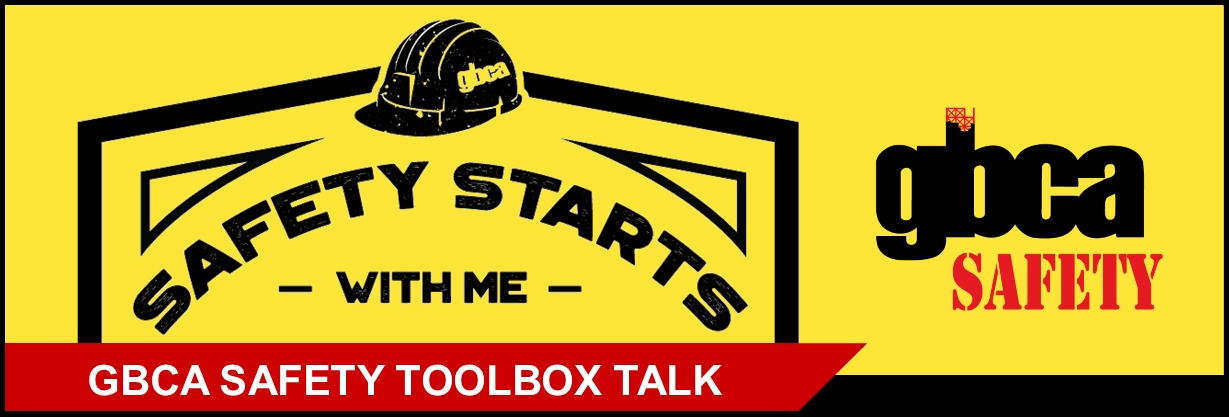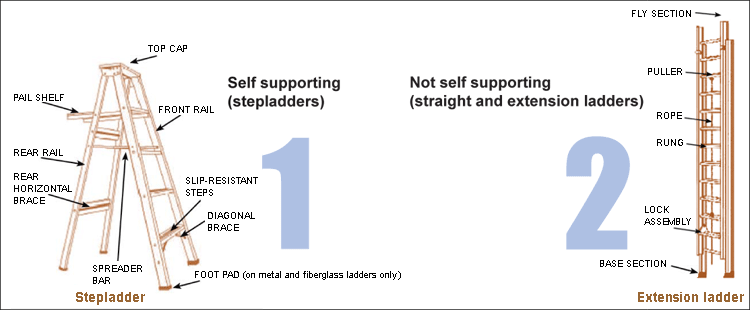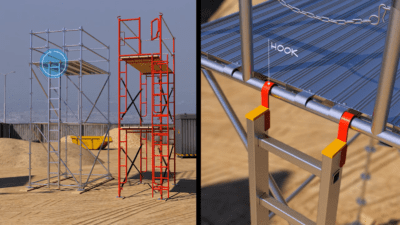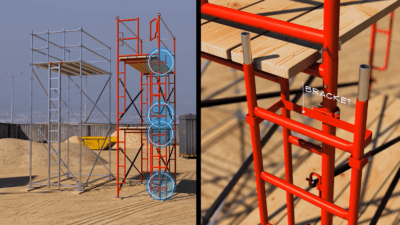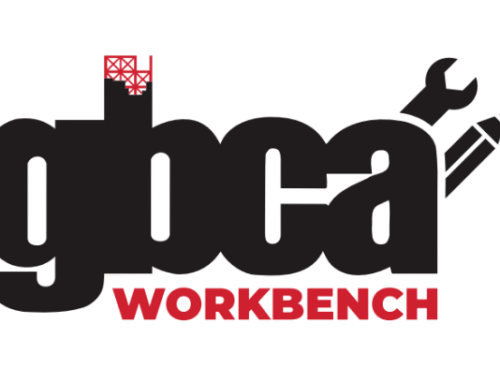This GBCA Safety Toolbox Talk goes over OSHA’s scaffold access requirements: what to look for when accessing a scaffold, and proper equipment and procedures.Click below to download the Toolbox Talk as a handout (includes Sign-In Sheet).
Scaffold Access Requirements
Scaffolds provide work platforms for workers to stay safe while working at heights. While they provide safe work platforms, safe access points to the platforms are not adequate. This toolbox talk goes over OSHA’s scaffold access requirements: what to look for when accessing a scaffold, and proper equipment and procedures for accessing a scaffold.
Requirements for Access to Scaffolds
- Employers must provide access when the scaffold platforms are more than 2 feet (0.6 m) above or below a point of access. [29 CFR 1926.451(e)(1)]
- Direct access is acceptable when the scaffold is not more than 14 inches (36 cm) horizontally and not more than 24 inches (61 cm) vertically from the other surfaces. [29 CFR 1926.451(e)(8)]
- The standard prohibits the use of cross braces as a means of access. [29 CFR 1926.451(e)(1)]

Permitted Types/Methods Of Access
Ramps and walkways [29 CFR 1926.451(e)(5)]
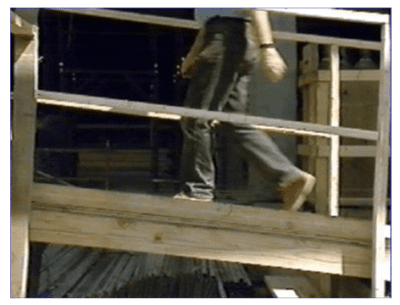
- Must have guardrails which comply with 29 CFR 1926.502(b) and 29 CFR 1926 Subpart M if more than 6 feet above lower levels.
- Must have a slope of no more than 1 vertical to 3 horizontal degrees (20 degrees above the horizontal).
- Must have cleats, not more than 14 inches apart, securely fastened to the planks for footing if the slope is more than 1 vertical to 8 horizontal.
Ladders, such as portable (step, straight, combination, and extension) 29 CFR 1926.451(e)(2)
Portable, Hook-on, and Attachable Ladders
- Must be positioned so as not to tip the scaffold.
- Hook on Ladders
- Attachable Ladders
Hook-on and Attachable Ladders
- Must be specifically designed for the type of scaffold with which they are used.
- Must have their lowest rung no more than 24 inches above the level on which the scaffold is supported.
- When used on a supported scaffold more than 35 feet high, must have rest platforms at 35-foot maximum intervals.
- Must have a minimum rung length of 11½ inches, and a maximum space between rungs of 16¾ inches.
Stairway and Stair Towers [29 CFR 1926.451(e)(4)]
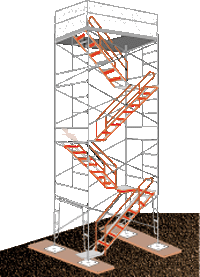
Stairway-type Ladders
- Must have their bottom step no more than 24 inches above the level on which the scaffold is supported.
- Must have rest platforms at 12-foot maximum intervals.
- Must have a minimum step width of 16 inches, except that mobile stairway-type ladders shall have a minimum step width of 11½ inches.
- Must have slip-resistant treads on all steps and landings.
Stair Towers
- Must have their bottom step no more than 24 inches above the level on which the scaffold is supported.
- Must have a stair-rail, consisting of a top-rail and a mid-rail, on each side.
- The top-rail of each stair-rail must also be capable of serving as a handrail, unless a separate handrail is provided.
- Stair-rails and handrails must be designed and constructed to prevent punctures, lacerations, snagged clothing, and projection.
- Handrails, and top-rails used as handrails, must be at least 3 inches from other objects.
- Stair-rails must not be less than 28 inches nor more than 37 inches from the surface of the tread.
- Must be at least 18 inches wide between stair-rails, and have a landing platform at least 18 inches wide by at least 18 inches long at each level.
- Must have slip-resistant surfaces on all treads and landings.
- Must be installed between 40 degrees and 60 degrees from the horizontal.
- Must have uniform riser height, within ¼ inch, for each flight of stairs, except for the top and bottom steps of the entire system.
- Must have uniform tread depth, within ¼ inch, for each flight of stairs.
Integral prefabricated frames [29 CFR 1926.451(e)(6)]
Built-in Scaffold Ladders
- Must be specifically designed and constructed for use as ladder rungs.
- Must have a rung length of at least 8 inches.
- Must not be used as work platforms when rungs are less than 11½ inches, unless each employee uses fall protection or a positioning device. [29 CFR 1926.502(e)]
- Must be uniformly spaced within each frame section.
- Must have rest platforms at 35-foot maximum intervals on all supported scaffolds more than 35 feet high.
- Must have a maximum space between rungs of 16¾ inches.
REMEMBER:
- Steps and rungs of ladders and stairways must line up vertically with each other between rest platforms.
Remember to record the attendees of your toolbox talk!

